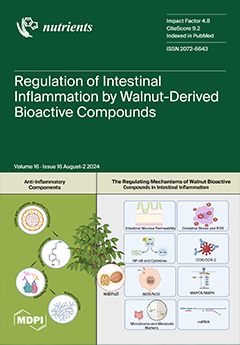Although whole grains have well-recognized protective effects against the development of cardiometabolic diseases, whole grain foods are poorly consumed by the general population. The aim of our study was to establish, at a population level, the vascular impact of a low intake of whole grain foods. From the initial cohort of the Brisighella Heart Study, we identified a population sample of 1503 individuals—including 720 men (47.9%) and 783 women (52.1%)—who overall largely consumed refined grain products. Diet quality was estimated by the Short Healthy Eating Index (sHEI), and women were found to have an eating pattern that was overall healthier than men (44.1 ± 8.5 vs. 36.3 ± 8.1,
p < 0.001). The development of an age- and blood pressure (BP)-adjusted multiple linear regression model found that carotid–femoral pulse wave velocity (cfPWV) was significantly predicted by the estimated glomerular filtration rate (eGFR, B = −0.148, 95% Confidence Interval (CI) −0.259–−0.038,
p < 0.001), serum uric acid (SUA, B = 0.220, 95%CI 0.095–0.320,
p = 0.001) and sHEI (B = −0.231, 95%CI −327–−0.089,
p < 0.001) in men, and by eGFR (B = −0.152, 95%CI −0.266–−0.052,
p < 0.001), body mass index (BMI, B = 0.174, 95%CI 0.111–0.331,
p = 0.002), SUA (B = 0.278, 95%CI 0.158–0.354,
p < 0.001) and sHEI (B = −0.218, 95%CI −308–−0.115,
p < 0.001) in women. Ultimately, a low sHEI score was a significant predictor of arterial stiffness also in a population cohort with a high consumption of refined grain products.
Full article






